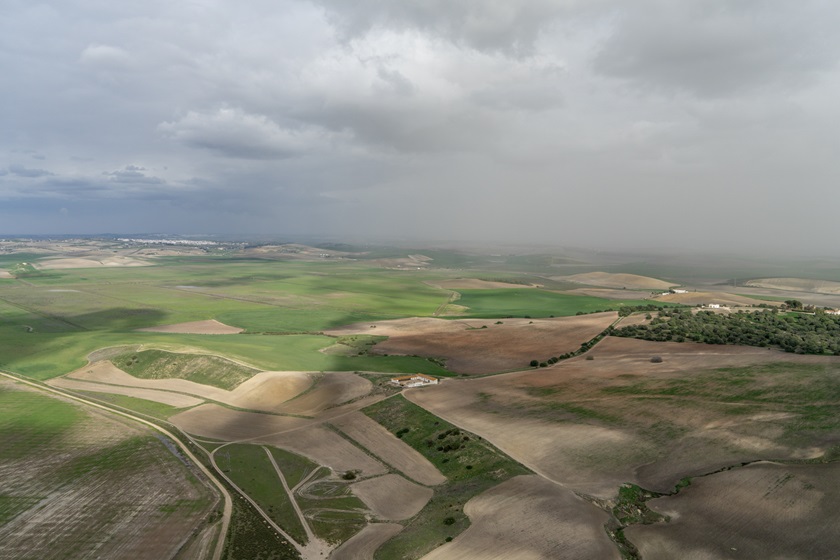Switzerland to Spain in a Super Cub
Taking the long way to the bottom of Europe
The weather is usually pleasant along the Mediterranean Sea and rainy in Green Spain to the north; however, a stubborn and large storm system turned things upside down and resulted in a majestic flight through the mountains and along hundreds of miles of rugged coastline.
The weather shouldn’t be that complicated to escape the Alps and fly down to the bottom of Spain in the spring; usually the concern lies in the mountains. This year, the reverse was true—for weeks on end. Switzerland was brilliantly sunny and dry, while normally arid sections of Spain were pummeled by low-pressure systems moving west to east through the Strait of Gibraltar into the Mediterranean, dousing North Africa and the Iberian Peninsula with low clouds and rain. A curious weather window materialized in the forecast models: a slice of sunny weather predicted along the north coast of Spain.
I hatched a plan to fly along the Mediterranean, west along the Pyrenees to Galicia, Spain, south through Portugal, and then hook southeast to Andalucía, Spain. Those forecast models proved accurate. The weather was good, as long as I could get out of Switzerland.
While Switzerland is part of the the Schengen Area spanning 26 European countries that allow unrestricted border crossing, it is not part of the European Union customs zone, so there is a customs formality crossing the border to or from France. I could have departed directly from Saanen, Switzerland; however, there were two realities I do not like: The Bern police charge 50 Swiss francs (50 CHF), or about $52 at current conversion rates, for an international departure, and they have a penchant for enthusiastically intrusive examinations and schedules. Instead, I hopped over the Sanetsch Pass to Sion, Switzerland, which is in Canton Valais, and in four years of entering and exiting, I have never seen a customs or police officer there.
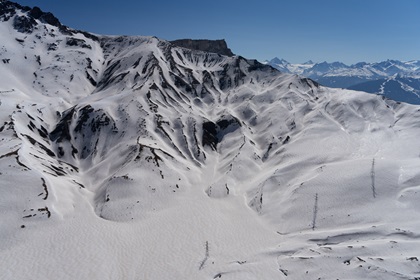 Having spent 27 CHF in landing fees and 26 CHF in fuel for the leap over the pass, I questioned spending 53 CHF to save 50 CHF, though was otherwise off on my grand journey. The Super Cub was able to climb over the Col de la Forclaz into France, and beneath Mont Blanc (nearly 16,000 feet), without circling, despite my heavy luggage and full fuel. The flight out of the Alps was pleasant, as terrain progressively gave way to the “Pre Alps,” the Rhône Valley near Valence, and eventually the south of France. While it was hazy and still early spring, viewing the Mediterranean after Montpellier was pleasant.
Having spent 27 CHF in landing fees and 26 CHF in fuel for the leap over the pass, I questioned spending 53 CHF to save 50 CHF, though was otherwise off on my grand journey. The Super Cub was able to climb over the Col de la Forclaz into France, and beneath Mont Blanc (nearly 16,000 feet), without circling, despite my heavy luggage and full fuel. The flight out of the Alps was pleasant, as terrain progressively gave way to the “Pre Alps,” the Rhône Valley near Valence, and eventually the south of France. While it was hazy and still early spring, viewing the Mediterranean after Montpellier was pleasant.
Cub by the tail
The first fuel stop was Béziers, which also happened to be the customs entry point into France. Customs service is available on request, which I arranged within the 48-hour advance notice requirement. No officer bothered to come, which is rather normal, though pilots have shared horror stories of interrogation and fines for failing to properly file a notification in France, so it was best to avoid that aggravation.
The airport is towered, which likely had something to do with a large airliner parked on the tarmac. I followed the controller's guidance to a fuel pump far too close to the jet for comfort. Towered airports in Europe have elaborate, rigid, and seemingly excessively planned parking and ramp operations.
They must have jet blast planned properly with regular airline service here, I thought to myself. I chocked the wheels with a large piece of wood and pumped the fuel. As I was putting the hose away, one engine of the jet started up, though the tangible result was little more than an occasional whiff of jet fuel. Still, I didn’t trust the situation and opted not to head into the office yet.
I contemplated moving the aircraft before the second engine started but ran out of time, so I scurried to the tail just in time for the airliner to spool those engines up to start taxiing. I held down the tail while getting pelted by a blast of gravel and jet fumes. Had I not been standing there, my aircraft likely would have been flipped over or pushed into the fuel pumps. I mentioned something to the lady behind the desk about rethinking the location of the fuel dispensing equipment in light of the airline activity, and was met with a shrug.
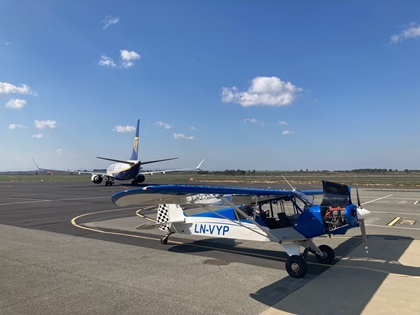 The next leg was east to west along the spine of the Pyrenees. While I lived for a time in the eastern Pyrenees, I wanted to see the entire mountain range again, and see some sections that I managed to not see in the Piper PA–11 Cub Special. The PA–11's limited range and the distance between airports made it much too difficult when I was living there. With double the fuel and more speed, things were remarkably different in a PA–18 Super Cub.
The next leg was east to west along the spine of the Pyrenees. While I lived for a time in the eastern Pyrenees, I wanted to see the entire mountain range again, and see some sections that I managed to not see in the Piper PA–11 Cub Special. The PA–11's limited range and the distance between airports made it much too difficult when I was living there. With double the fuel and more speed, things were remarkably different in a PA–18 Super Cub.
One of the reasons for flying along the Pyrenees again, even though I had done it to great excess, was to adjust my frame of reference. I find that the Alps are less terrifying than the Pyrenees once were to me. Years later, I can't say if the Pyrenees really were that rugged, if Switzerland’s superior mobile phone and rescue network mattered, or if I was more afraid in the past. While all three are factors, it was this majestic evening flight along the Pyrenees that confirmed that, while they are lower than the Alps, the range is more like a plateau in places, with far less civilization and fewer suitable landing zones. It was as rugged as I remembered.
As the Pyrenees began their western descent, I had to find a way under the clouds. There was a gap over a valley, where Basque farmers burning fields created marginal visual conditions. The smoke was trapped against terrain, which I eventually cleared, much to my concern in the process. Eventually, the waters of the Atlantic Ocean came into view. I asked the tower controllers at Biarritz, France, for a moment to head out to sea to watch the sun go down, and then flew along the coast on base and then final for the night at Biarritz. That is a scene I will not forget.
'You know this is how these airports are'
I stayed the night near the water in the old section of the city, where the air was electrifying with cool salt and the sound of swells exploding against the rocks two blocks away. I contemplated staying. The next morning, the inclination to stay grew even more, while I also considered cutting straight across Spain and forgetting the north coast. The weather situation was as clear as ever: The entirety of Spain was a disaster, except for sun and a 20-knot tailwind along the north coast. I finally told myself, if you do not see this section of the coast today, you never will. I dragged myself to the taxi, then made the long walk to the tarmac, and in slow motion finished my preflight procedures, filed a flight plan, paid the fee, and set off.
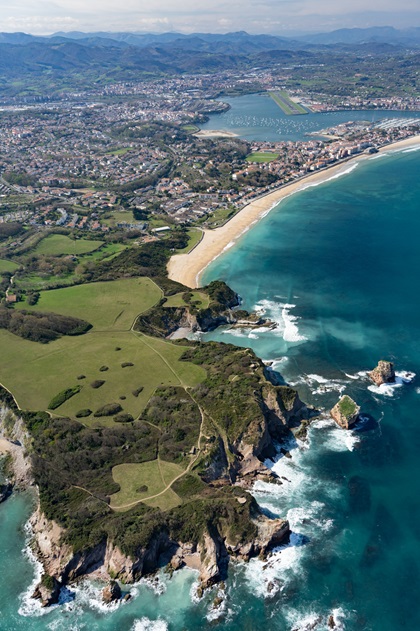
My malaise evaporated 10 minutes after takeoff, when I was along the Atlantic again. It was resplendently beautiful. Within a few minutes, I was on with San Sebastián Tower in Spain, and flying along the Basque coast, something I had always wanted to do.
The coast kept getting prettier, the tailwind faster, and my mood better. I flew just offshore at roughly 1,000 feet, blazing at up to 100 knots in economy cruise, with not a bump whatsoever. Bilbao came and went, and as I approached Santander, I could see the snow-capped Picos de Europa mountain range, with the Atlantic in the foreground. The view lasted for a long time.
Fuel was at Asturias Airport, unfortunately a state-run airport. In the northern part of Spain, airports are mostly airline-serviced, with little in the way of general aviation airports.
Many factors influenced my selection of this airport, particularly the difficultly of flying in Europe in this kind of aircraft. If one were to take a sectional map, look at all airports visible, and wonder which one a) is open, b) has fuel, c) allows GA aircraft, and d) doesn’t charge heinous fees, well, that is an exercise in misery. It is safe to say that, for at least 70 percent of airports on the map, one cannot just land and buy fuel. Some advance arrangement or restriction comes into play, so flight planning is complicated. Europe does not have an easy-to-use airport directory, Europe has country-specific references with listings that run up to 16 pages long per airport. Key data points, such as “fuel closed noon to 2 p.m.,” might be buried on page 10, though you will find nothing about fees for landing, handling, parking, or other services, or how pleasant the experience is. For that, my iPad navigation software has pilot reviews, which are the first place I look. Asturias came back as reasonable, so I opted for it, knowing it would take potentially two hours to refuel.
After landing, the marshaller directed me a third of a mile away from the building, as far as possible from services, while the ramp was otherwise empty. As soon as I got out, he hopped in the car and drove away hastily.
“Do not get angry,” I told myself. “You know this is how these airports are.”
The fuel truck came astonishingly fast, a pleasant surprise. After 10 minutes of paperwork, including the infamous “VAT number,” fueling commenced. Reviews from pilots indicated that they refuse to fuel without a “VAT number,” to the point that pilots from central Europe brought their tax returns with them. I handed them my Spanish ID number and it worked. The fuel guy left, unable to give me a ride, so I got my exercise and walked to the terminal, an astonishing distance.
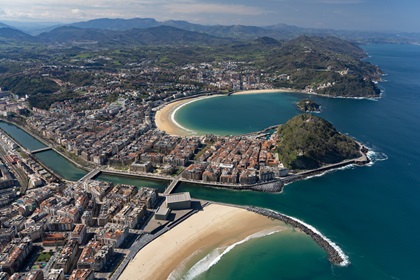 I was directed to enter with arriving airline passengers, through baggage claim, out of the secured area, and into the departures hall. After asking three people where the “C office” was, I finally found it, on the other side of the building. I ascended the stairs and explained to the security guard that I was there to pay the landing fee. She had never heard of someone paying a landing fee, so after eight minutes of phone calls, I was allowed in, walked through a maze of halls, and spent 10 minutes paying a small fee. I filed my next flight plan, which the attendant printed out, stamped, and told me to use to clear security. The security staff had never seen such a thing, and they told me to go to the other side of the airport to go through security over there. I walked over and there was no “other” security, so I walked back, argued with the officer about the form, and they called someone. They finally let me through “as an exception.” On the other side, they let me onto the tarmac “as an exception,” and I got my exercise walking back to the far end of the empty tarmac.
I was directed to enter with arriving airline passengers, through baggage claim, out of the secured area, and into the departures hall. After asking three people where the “C office” was, I finally found it, on the other side of the building. I ascended the stairs and explained to the security guard that I was there to pay the landing fee. She had never heard of someone paying a landing fee, so after eight minutes of phone calls, I was allowed in, walked through a maze of halls, and spent 10 minutes paying a small fee. I filed my next flight plan, which the attendant printed out, stamped, and told me to use to clear security. The security staff had never seen such a thing, and they told me to go to the other side of the airport to go through security over there. I walked over and there was no “other” security, so I walked back, argued with the officer about the form, and they called someone. They finally let me through “as an exception.” On the other side, they let me onto the tarmac “as an exception,” and I got my exercise walking back to the far end of the empty tarmac.
That was an efficient version of the typical GA experience at a large, state-run Spanish airport, as hard as that might be to believe.
The flight continued along the coast and then inland. I would have liked to have seen the entire coastline, except there were military exercises blocking some key points, so I turned to head directly for the Ría de Arousa. I still had a strong (sometimes raucous) tailwind on the front edge of the low-pressure system, with clouds to the left, sun ahead and to the right, and winds changing direction to remain a tailwind as I was changing heading!
Arriving at the western Atlantic coast, the winds were blowing offshore, with a descending component, which meant that temperatures were warm due to the foehn winds descending down the mountain slopes. I was a bit toasty in the cockpit, even with the window open. I turned south along the coast, and bid the sun adieu at the Ría de Vigo. The coast at this point looked like California as I crossed into Portugal. About 20 minutes into Portugal, the tailwind became a headwind, as the components of the low-pressure zone changed. Clouds were getting thicker and lower. I landed in a crosswind breeze at Vilar da Luz, east of Porto, and called it a night, as the first few raindrops came down.
Saharan dust
I broke my all-time fuel record at Vilar da Luz, paying over $15 per gallon to fill up. The flight school apologized for “having to charge so much” and went on to explain how they can sell fuel to visitors, though they cannot advertise it, as it “cannot be our primary business” or it triggers all sorts of fuel dispensary issues. Pilot reviews told me that they sell the fuel, and a phone call from Asturias confirmed that it would work. The flight school told me they have a corporate landing fee account for state-run Spanish airports, so they do not have to do the mile-long walking routine to the C office. There may also be an app in the works to pay fees. Such tips and tricks to get around a heinous system are how things work in this neck of the woods.
The next day, I was enjoying a resplendent breakfast and again tempted to take a break. My iPad showed lots of rain and wind, though things would be worse in the coming days. I had less than a full day of flying ahead, even though it would still be a battle. If I could get the job done, I’d be sitting on the Spanish coast later in the evening, so I mustered my resolve and took off.
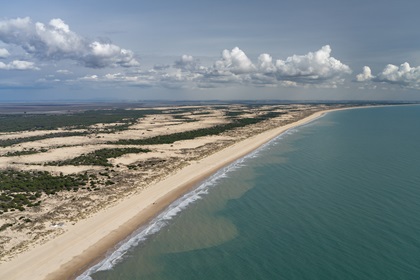 Light rain had left Saharan dust all over the Super Cub, a harbinger of things to come. Winds were blowing strongly out of the southeast, making for a turbulent experience riding the mountain waves at low altitude, as terrain is quite rugged to the east. Visibility was legal though not ideal, and precipitation intermittent. I abandoned the coast and pointed generally straight for Évora, my next fuel stop.
Light rain had left Saharan dust all over the Super Cub, a harbinger of things to come. Winds were blowing strongly out of the southeast, making for a turbulent experience riding the mountain waves at low altitude, as terrain is quite rugged to the east. Visibility was legal though not ideal, and precipitation intermittent. I abandoned the coast and pointed generally straight for Évora, my next fuel stop.
Once I got past the hills at the Tagus River, things turned an eerie orange, as Saharan dust filled the air. Visibility was fine, and precipitation was light, though it was somewhat menacing. Portugal has a different time zone than Spain, so I misread the Coordinated Universal Time conversion and landed in the middle of the fuel guy’s lunch. After that was over, the flight was the final leg to Trebujena, Spain, though it was the most dubious in terms of weather. It was a scud run in Class G airspace near the Spanish border, where thankfully everything improved dramatically approaching the coast.
Once in Spain, my iPad reported “5km visibility, widespread dust” at Jerez, near my destination. “That cannot be. Typical Spain,” I said to myself, assuming that the weather station was broken. I had tremendous visibility, with training thunderstorms over Seville, which meant it had rained in Jerez. How could there be dust?
With angry storms around and Seville Approach busy with airliners, I opted to take the sea route to deal with the Doñana National Park restricted area. A call to Rota Tower got clearance to nudge into the zone to fly along the coast. I did not have a life jacket as I was not in the mood to head many miles out to sea to avoid the zone. As I got to the mouth of the Guadalquivir River, Jerez’s weather station was proved correct. There was indeed a lovely dust storm blowing in from the Sahara, which I flew into on long final for Trebujena. It was an appropriate capstone to such a long flight.
This trip, along with half a decade of flying in Europe, solidified the view that what I could do with a PA–11 without a radio, starter, or transponder in the United States required something like a Super Cub in Europe. Much of what I did on this flight from Switzerland, as long as it was with more than 16 hours on the tachometer, were things that I had dreamed of doing in the PA–11 and simply could not, even when I was positioned much closer in the Pyrenees.
